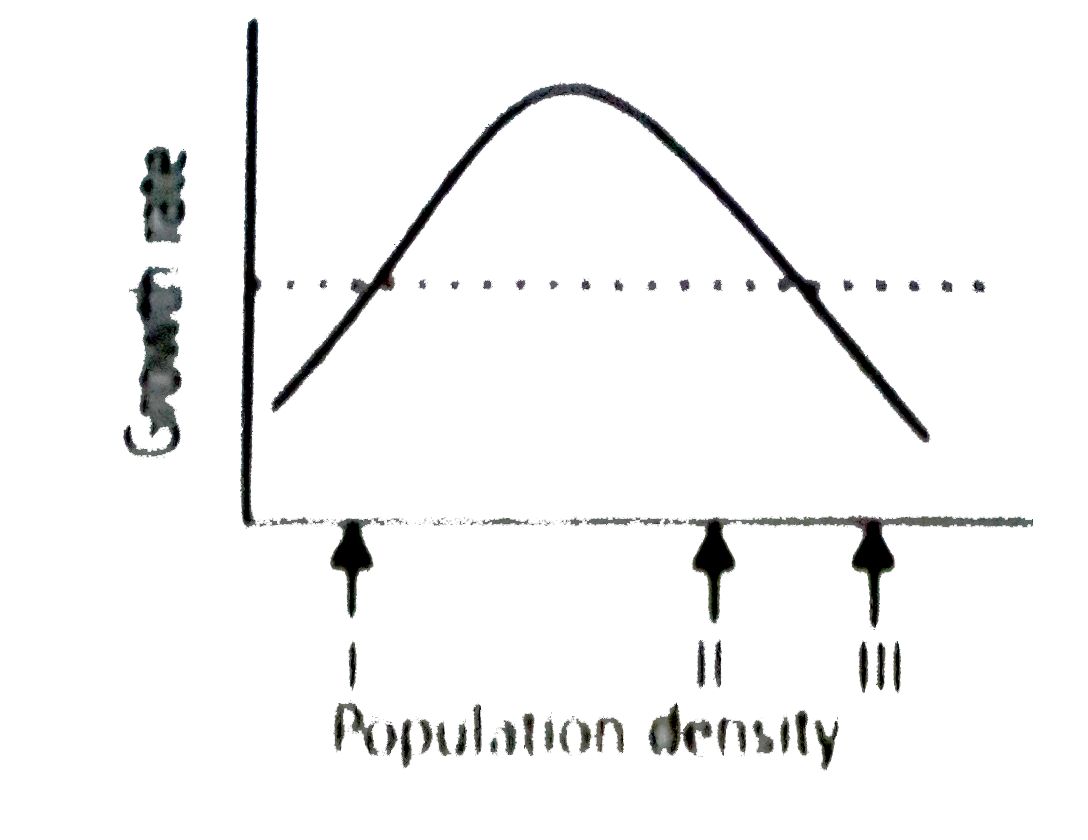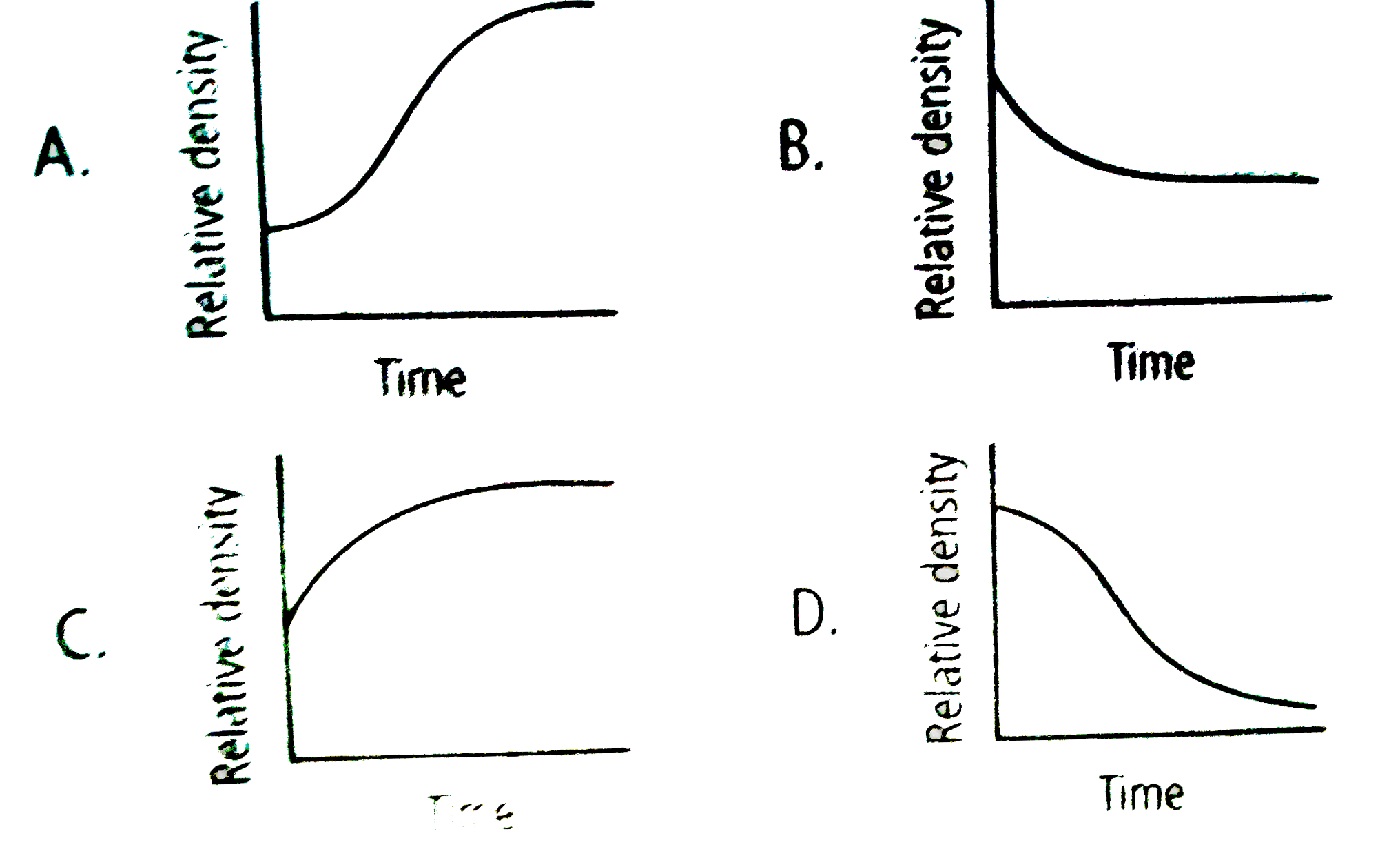If N= population density at time t, then population density at time t+1 can be written as. Nt+1=Nt+[(A+B)−(C+D)]. Select the correct option for A,B,C and D in the above equation.
A can be mortality and B can be natality
B can be immigration and C can be natality
C can be mortality and D can be immigration
A can be natality and D can be emigration.
The correct Answer is:D
To solve the equation for population density at time t+1, we need to understand the components represented by A, B, C, and D in the equation:
Nt+1=Nt+((A+B)−(C+D))
1. Identify the Components of Population Change:
- The population density at time t is represented as Nt.
- The change in population density from time t to t+1 can be influenced by several factors.
2. Factors Contributing to Population Increase:
- Natality (A): This represents the birth rate, contributing positively to the population density.
- Immigration (B): This represents individuals moving into the population from other areas, also contributing positively.
3. Factors Contributing to Population Decrease:
- Mortality (C): This represents the death rate, which decreases the population density.
- Emigration (D): This represents individuals leaving the population to join another, which also decreases the population density.
4. Construct the Equation:
- The equation can be summarized as:
\(
N_{t+1} = N_t + ((Natality + Immigration) - (Mortality + Emigration))
\)
- Thus, we can assign:
- \( A = \text{Natality} \)
- \( B = \text{Immigration} \)
- \( C = \text{Mortality} \)
- \( D = \text{Emigration} \)
5. Final Formulation:
- Therefore, the equation can be rewritten as:
\(
N_{t+1} = N_t + ((Natality + Immigration) - (Mortality + Emigration))
\)
Conclusion:
The correct assignments for A, B, C, and D are:
- \( A = \text{Natality} \)
- \( B = \text{Immigration} \)
- \( C = \text{Mortality} \)
- \( D = \text{Emigration} \)
- The population density at time t is represented as Nt.
- The change in population density from time t to t+1 can be influenced by several factors.
- Natality (A): This represents the birth rate, contributing positively to the population density.
- Immigration (B): This represents individuals moving into the population from other areas, also contributing positively.
- Mortality (C): This represents the death rate, which decreases the population density.
- Emigration (D): This represents individuals leaving the population to join another, which also decreases the population density.
- The equation can be summarized as:
\(
N_{t+1} = N_t + ((Natality + Immigration) - (Mortality + Emigration))
\)
- Thus, we can assign:
- \( A = \text{Natality} \)
- \( B = \text{Immigration} \)
- \( C = \text{Mortality} \)
- \( D = \text{Emigration} \)
- Therefore, the equation can be rewritten as:
\(
N_{t+1} = N_t + ((Natality + Immigration) - (Mortality + Emigration))
\)
The correct assignments for A, B, C, and D are:
- \( A = \text{Natality} \)
- \( B = \text{Immigration} \)
- \( C = \text{Mortality} \)
- \( D = \text{Emigration} \)
Topper's Solved these Questions
- BOOK - NCERT FINGERTPS ENGLISHCHAPTER - ORGANISMS AND POPULATIONEXERCISE - HOTS5videos
ORGANISMS AND POPULATION
- BOOK - NCERT FINGERTPS ENGLISHCHAPTER - ORGANISMS AND POPULATIONEXERCISE - NCERT20videos
ORGANISMS AND POPULATION
- BOOK - NCERT FINGERTPS ENGLISHCHAPTER - MOLECULAR BASIS OF INHERITANCEEXERCISE - Molecular Basis Of Inheritance151videos
MOLECULAR BASIS OF INHERITANCE
- BOOK - NCERT FINGERTPS ENGLISHCHAPTER - PRACTICE PAPERSEXERCISE - Practice paper150videos
PRACTICE PAPERS
Similar Questions
Study the schematic representation given above and answer the following questions : (a)Identify A in it. (b)Identify D in it. (c)When the population density at time t is N as shown above, write the population density at time t+1 in the form of an equation using appropriate symbols.
 View Solution
View SolutionThe velocity v of the a particle depends upen the time t according to the equation v=a+bt+cd+1 Write the dimension of a, b,c and d.
View Solution
Knowledge Check
- Question 1 - Select One
The change in population size at a given time interval t, is given by the expression
Nt = No+ B + I - D - E
I, B and D stand respectively forARate of immigration, mortality rate, natality rateBRate of immigration, natality rate, rate of emigrationCMortality rate, natality rate, rate of immigrationDRate of immigration, natality rate, mortality rate - Question 2 - Select One
The relationship between population density (Nt) and population growth rate (R=Nt+1lNt) in a certain animal species is shown below.

Choose from the following graphs the appropriate populations growth patterns that would be obtained if the population is at the densities (I, II, III) shown in the graph above. [Note : THe y-axis in A to D is relative density that cannot be compared to the absolute density in the figure]
 AI−A,II−B,III−CBI−D,II−C,III−BCI−B,II−C,III−DDI−C,II−A,III−B
AI−A,II−B,III−CBI−D,II−C,III−BCI−B,II−C,III−DDI−C,II−A,III−B
Draw and explain a logistic curve for a population of density (N) at time (t ) whose intrinsic rate of natural increase is (r) and carrying capacity is (k).
View SolutionA T.V. tower has a height 100m. What is the population density around the T.V. tower if the population density around the T.V. tower if the total population covered is 50lakh ? Radius of earth =6.4×106m.
View Solutionselect the correct representation of density of population (N) which can be expressed after a period of time t+1.
View SolutionThe population p(t) at time t of a certain mouse species satisfies the differential equation dp(t)dt=0.5p(t)−450. If p(0)=850 , then the time at which the population becomes zero is
View SolutionProve the following identity: (secA secB+tanAtanB)2−(secA tanB+tanAsecB)2=1
View SolutionThe velocity υ of a particle depends upon time t, according to the equation υ=a+bt+cd+t Write the dimensions of a,b,c, and d.
View Solution

